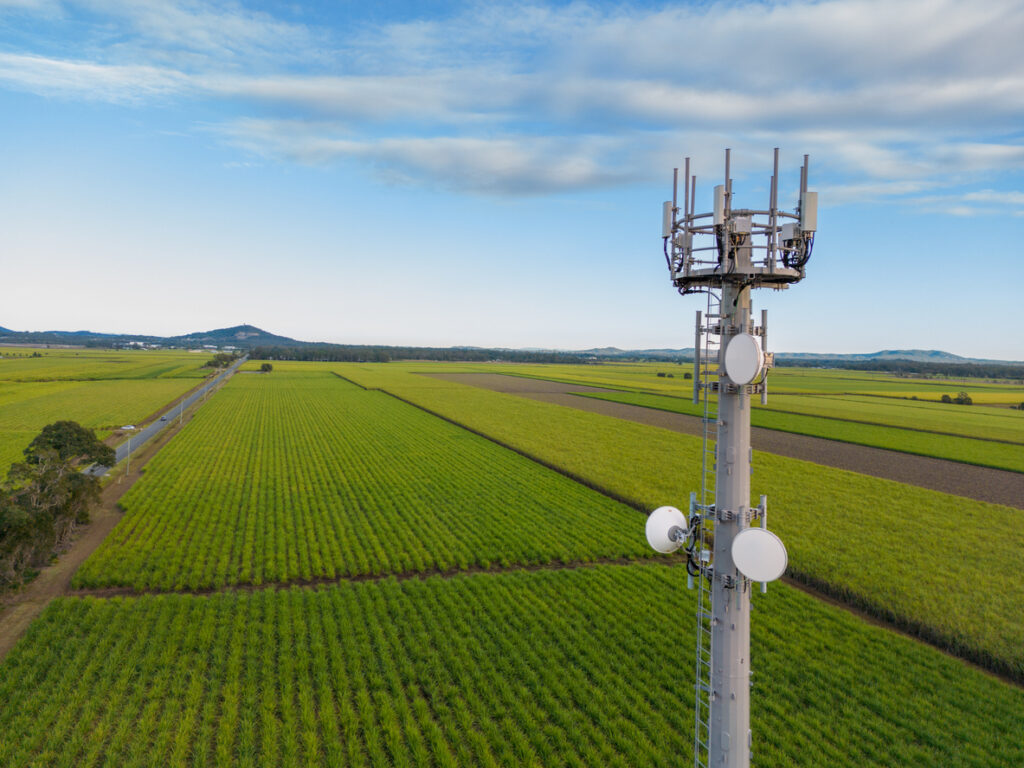How we do business today continues to evolve at an unprecedented pace, with enterprise connectivity becoming more critical than ever before. The enterprise networking market is estimated at USD 124.59 billion in 2025 and is expected to reach USD 193.77 billion by 2030 at a CAGR of 9.2%, reflecting the massive investment organizations are making in robust network infrastructure.
Connectivity, both in the technical and interpersonal sense, has become the foundation of successful companies navigating hybrid work environments, global operations, and digital transformation initiatives.
Managed connectivity is a critical foundation for a thriving network, keeping employees connected to the people, tools, and resources they need to do their jobs while facilitating the development of successful relationships with each other and their clients. This has become increasingly vital as hybrid work arrangements stabilize, with 23% of new jobs offering hybrid options by the end of 2024, creating new demands for seamless connectivity across distributed workforces.
Modern operations bring products and services to consumers worldwide, giving more availability and access to people in smaller towns or remote areas. However, managing all the network, hardware, and software necessary for enabling this type of business is a huge undertaking. Managed connectivity gives companies what they need to operate without the hassle of managing it in-house.
What Is Managed Connectivity?
Managed connectivity refers to a service where a third-party provider oversees and manages an organization’s network connections and related services. The provider ensures that the enterprise network has stable and secure connections, optimizes network performance, and provides necessary hardware and software solutions. In 2025, this approach has evolved to incorporate cutting-edge technologies like artificial intelligence and automation.
As networks grow more complex, the demand for intelligent networking solutions is surging. We will see a rise in “Artificial Intelligence for IT Operations (AIOps)” that leverages machine learning and big data analytics to enhance network performance, automate repetitive tasks, and predict potential issues. This evolution means managed connectivity providers now offer predictive maintenance capabilities that can identify and resolve issues before they impact business operations.
The goal of managed connectivity is to offer businesses a hassle-free way to maintain high-quality, secure network connections without the need for in-house management. It allows companies to focus on their core operations while benefiting from expert management of their network infrastructure. With tight IT budgets and rising security threats, enterprises are looking for flexible, scalable, and resilient network services, leading to an uptick in Network as a Service (NaaS) models.
The Rise of Network as a Service (NaaS)
This is of particular value and interest to multi-site and global companies. Rather than spending time and money for staff to monitor and manage multiple networks across locations, your managed service provider (MSP) has the tools, technical expertise, and experience to not only keep your sites functioning but to optimize them using advanced technologies.
By adopting a subscription-based model, businesses can avoid the hefty capital expenditures associated with traditional network infrastructure while benefiting from scalable, on-demand services. Modern MSPs monitor networks using AI-powered analytics and take proactive measures to identify outages or underperforming connections before they impact business operations.
Enhanced Security and Compliance Focus
Managed service providers monitor and take proactive measures to identify outages or underperforming connections and develop a plan for business continuity in the event of business disruption or disaster. With global end-user spending on security and risk management expected to reach $215 billion in 2024, a 14.3% rise from the $188.1 billion spent in 2023, security has become a paramount concern for managed connectivity providers.
All of this is handled for you with the added benefit of consolidated billing and 24/7 monitoring using advanced security protocols and compliance frameworks.
Global Enterprise Voice + Managed Connectivity
Though we now have many ways to convey our thoughts and deliver messages, voice remains the cornerstone of communication in enterprise environments. Verbal conversation can prevent or reduce misunderstanding and impart interest, concern, or empathy often more effectively than words typed on a screen, as well as encourage further dialogue. This has become even more critical as organizations adapt to hybrid work models.
Businesses need flexible voice communication solutions that work regardless of where their employees or customers are located. With 28.2% of full-time employees working a hybrid model compared to 12.7% of full-time employees who work from home, organizations require voice solutions that seamlessly bridge office and remote environments.
Modern Enterprise Voice Solutions
Enterprise voice is much more than a legacy or VoIP telephone system. It is a group of interrelated and complementary solutions that are powered by the internet and delivered through cloud technology. It serves as the backbone of modern customer service and call centers, with capabilities ranging from simple voice calls to audio and video conferencing, call routing, visual voice, and three-way calling.
Modern managed connectivity providers integrate these voice solutions with advanced networking capabilities, ensuring crystal-clear communication regardless of location or device. They leverage Software-Defined Wide Area Network (SD-WAN) solutions that lower operational costs and improve efficiency while ensuring security.
Supporting Hybrid Workforce Communication
So, how are real-life companies adopting these services, and what benefits are they realizing? Organizations are discovering that integrated voice and connectivity solutions provide the flexibility needed to support modern workforce expectations. With employees increasingly demanding flexible work arrangements, having robust communication infrastructure becomes essential for maintaining productivity and collaboration.
Real-World Success Stories: Managed Connectivity in Action
Updating Network Infrastructure To Meet Growing Demands
Take a look at a scenario from the perspective of a yacht cruise and events business. Multiple internet and multiprotocol label switching (MPLS) providers across 20 locations were not working effectively. Scaling and meeting the demand for reliable and fast network connectivity was becoming a time-consuming drain on resources. Company leaders wanted a better solution from a single provider.
They chose a provider that identified the problems and began designing, implementing, and managing the solution. The first step was redundant connectivity across all sites that included not only primary fiber connection but secondary options like cable, wireless, and 4G, and 5G LTE for remote sites like ticketing offices on a pier where maintaining connectivity was challenging.
The project manager handled implementation questions and issues swiftly, identifying alternatives when internet providers could not meet the requested bandwidth. With the new managed connectivity solution, over-taxed resources were freed up, the company doubled their locations through an acquisition, easily integrating them into the new infrastructure, and now they are looking forward to upgrading their enterprise voice solution.
Managed Connectivity for a New Hospital
A healthcare system in the Southwestern U.S. was building a new facility and had several critical requirements that had to be in place in a very limited timeframe. They needed carrier diversity and redundancy for high availability, and the ability to gracefully handle high-volume data and voice traffic. The new data and voice circuits had to have dual failover capacity, both at the facility and the healthcare system data center.
The solution was to implement Managed Connectivity and Managed SIP. The final solution had not only carrier diversity using an existing data center connection as a backup, but it also had two session border controllers (SBCs) at the hospital and one at the data center to provide multiple failover points. In addition, it featured 10,000 DIDs and 300 dynamically allocated Session Initiation Protocol (SIP) trunks to ensure every data session and voice call could be completed quickly, clearly, and without interruption.
This solution was implemented in time for the new hospital’s grand opening, providing communication between the hospital, data center, and the public from the minute the doors opened. Every concern about availability, volume, and redundancy was resolved in a solution with one provider, a single point of contact, and one bill—a bonus in the eyes of the healthcare system.
What Can Managed Connectivity Do for Your Business in 2025?
Managing a robust and secure enterprise network is a daunting task in today’s complex technological landscape. As a business leader, you are responsible for recruiting, hiring, and building a knowledgeable and highly skilled staff that is responsible for constant monitoring, regular updates, and rigorous adherence to policies and standards to keep your network up-to-date and intrusion-free.
Adopting a managed connectivity solution for your business provides a host of advantages, particularly for global companies and those with three or more locations. With the enterprise networking market experiencing significant growth and technological advancement, the right MSP can provide solutions that weren’t available just a few years ago.
Reduce Costs and Improve ROI
You could research and experiment with solutions in-house, as many businesses do. You could waste time and money while potentially missing opportunities or opening your company up to risks like data breaches or ransomware. However, those options will end up costing you more money over time, especially considering cyberattacks occur at an alarming rate of over 2,200 times daily, with someone falling victim every 39 seconds.
Outsourcing your network services to a managed connectivity provider gets you a custom-designed solution and flexible payment options, such as paying over the term of the contract, while taking advantage of the favorable pricing that comes from working with an MSP. IDC research found that organizations saw a 402% ROI over five years as well as 39% lower total cost of operations and 38% more efficient network management with SD-WAN implementations.
That’s only the initial setup. Don’t forget the savings you realize when you don’t have to house an entire staff to manage your network. Your provider has the specialists available when you need them, including expertise in emerging technologies like AI-powered networking and advanced security protocols. Your expenses not only become more manageable but more predictable with a single provider and a transparent recurring monthly price for all your network management and support.
Reduce Risk and Enhance Security
Every leader understands that risk is inherently part of doing business. Whether it’s safeguarding against cybercriminals, planning for potential catastrophic outages, or adapting to changes in government regulations, or economic conditions that impact your operations, every company must have a plan for mitigating and responding to business interruption.
With the global cyber security market size estimated at USD 245.62 billion in 2024 and projected to grow at a CAGR of 12.9% from 2025 to 2030, the threat landscape continues to evolve rapidly. No matter the situation in any region where you do business, managed connectivity gives you options to navigate unplanned disruptions and swiftly react and pivot to keep your company functioning effectively and efficiently when situations outside of your control arise.
Improve Security and Compliance
Cybercriminals continue to work harder as technology advances. There is never a time you can assume you’ve completely thwarted every risk of intrusion or data theft. Managed security and connectivity is like having a watchdog on your network 24/7/365 that also plans for new threats as they emerge while keeping your technology current.
AIOps tools can analyze vast amounts of network data to identify patterns and proactively optimize traffic flows, providing unprecedented visibility into network performance and security threats. Remaining vigilant on security and compliance with secure firewalls, audits, and strict adherence to standards, protocols, and best practices is just a sample of the ways an MSP can keep your business safe.
Modern managed connectivity providers leverage advanced AI and machine learning capabilities to detect anomalies, predict potential security breaches, and automatically implement countermeasures before damage occurs.
Plan for Current and Future Success by Partnering With the Right Managed Services Provider
Everything would be much easier to manage if we only had a way to predict the future. We could avoid every risk, exploit every opportunity, prevent waste, and increase our return on investment with every expenditure. While we can’t predict the future, the outlook for 2025 is bright, with fundamental demand for digital transformation, cloud migration, and hybrid work solutions remaining intact.
The only thing we can do, however, is make smart decisions based on our business needs, risk profiles, anecdotal evidence, statistical probability, and the tools and technology to help us manage risk while achieving our goals. It’s a weighty responsibility made easier when you have a partner that specializes in doing exactly that, leveraging the latest technologies and industry best practices.
The connectivity trends of 2025 reveal a clear trajectory: enterprises are moving toward smarter, more secure, and flexible networking solutions. Whether it’s through adopting NaaS, leveraging AIOps, or enhancing network visibility, the focus remains on enabling seamless connectivity that drives business growth.
Modern MSPs offer comprehensive solutions that incorporate emerging technologies like Low Earth Orbit (LEO) satellites for remote connectivity, advanced Wi-Fi 6 and Wi-Fi 7 implementations, and Zero Trust security frameworks. These providers understand that network infrastructure must be designed not just for today’s needs, but for tomorrow’s opportunities.
When you are ready to upgrade your network, save money, reduce risk, and improve your communications while preparing for the technological advances of 2025 and beyond, BCM One can help. Our next-generation communications and managed services modernize communications and collaboration capabilities across every site, allowing you to optimize operations in an increasingly diverse and geographically dispersed work environment. Contact us today to get started with a managed connectivity solution that’s built for the future.





